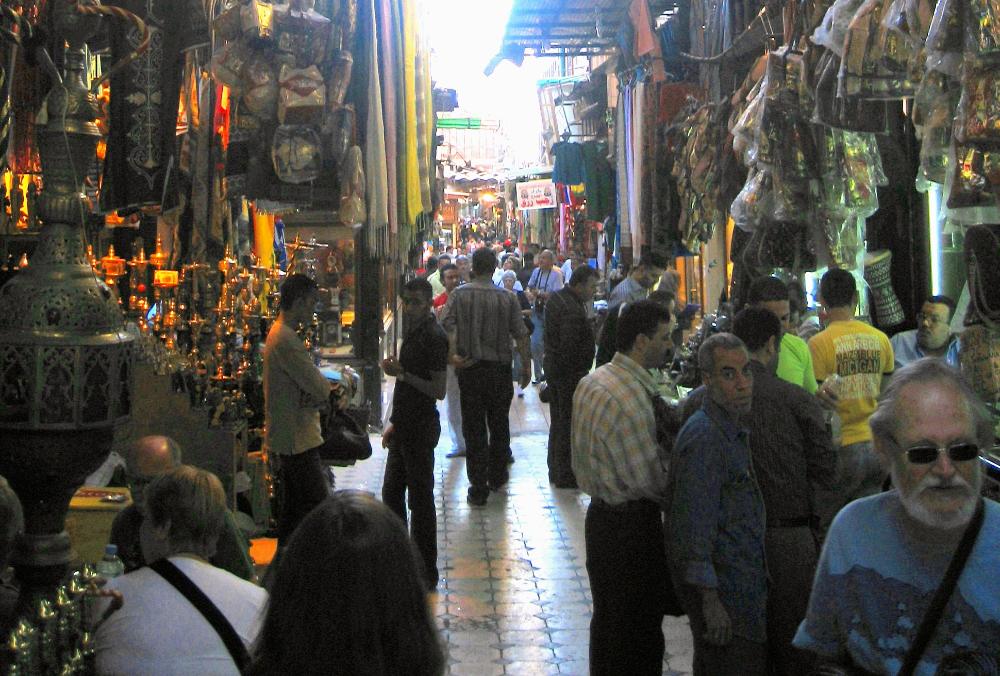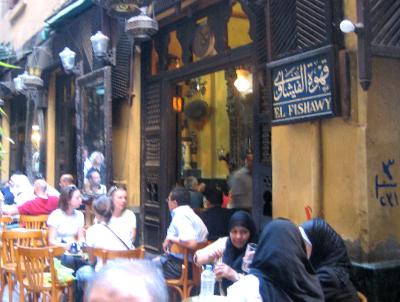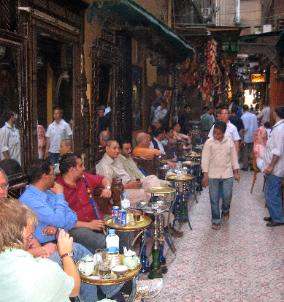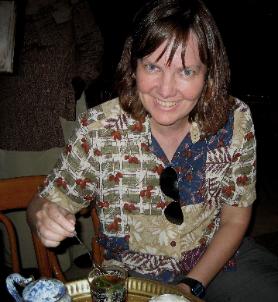
Where We Be
| The salmon-colored Egyptian Museum is packed with treasures -- including the treasures from King Tut's tomb (no photos permitted) |
| Egyptian Museum & Khan-El-Kalili -- Cairo |
In a way we saved the best for last. Seeing King
Tut's treasures has always been at the top of
our list. We meet our Cairo guide Sally and walk
from the Nile Hilton to the salmon-colored
Egyptian Museum which is right next door. Sally
takes us on a tour of the first floor. There’s
absolutely no way to see all of this place in a
day, or even a week, so she concentrates on
highlights like the Narmer Palette and the best
of the best statues of pharaohs and scribes.
Robin’s personal favorite on the first floor is
the 4,500-year-old granite statue of the Pharaoh
Chephren being protected by the wings of the
falcon god Horus. Mine is the wooden statue of
Ka-Aper, also 4,500 years old, carved out of a
single piece of sycamore, with incredibly
lifelike eyes and a recognizably individual face.
We’re glad for Sally’s guidance or else we'd
hardly know where to begin.
We head upstairs to the second floor, which is
dominated by the huge collection of King Tut’s
treasures. We see his magnificent golden
throne and a host of other treasures too
numerous to mention. Suffice it to say that the
second floor is a treasury of art that should
never be missed during any visit to Egypt.
There’s one thing we still haven’t seen, and
that is the the legendary Gold Room, a separate
air-conditioned room, off-limits to guides, which
contains Tut’s most famous treasures of all. We
happen to enter at a time when there are very
few people in the room. Right in the center is
Tut’s famous gold mask, and for a minute or two
we have it all to ourselves. Talk about a magical
moment! We circle around and around it,
enjoying it from every angle.
Eventually we move on to the many other
treasures in the Gold Room, including Tut's
beautiful nested coffins. The inner gold coffin
is deeply etched with lovely designs. As hard
as it is to believe given its size, the inner coffin
is made entirely of solid gold. The painted and
gilded coffin that holds this one is, if anything,
even more beautifully decorated. All around the
sides of the room are displays of other gold
and jeweled treasures found with his coffin or
literally wrapped within the bandages of his
mummy. When you consider that this was a boy-
king who died at 18 or 19, it really makes you
wonder what the treasures of the truly powerful
pharaohs of Egypt must have been like.
Tut's treasures has always been at the top of
our list. We meet our Cairo guide Sally and walk
from the Nile Hilton to the salmon-colored
Egyptian Museum which is right next door. Sally
takes us on a tour of the first floor. There’s
absolutely no way to see all of this place in a
day, or even a week, so she concentrates on
highlights like the Narmer Palette and the best
of the best statues of pharaohs and scribes.
Robin’s personal favorite on the first floor is
the 4,500-year-old granite statue of the Pharaoh
Chephren being protected by the wings of the
falcon god Horus. Mine is the wooden statue of
Ka-Aper, also 4,500 years old, carved out of a
single piece of sycamore, with incredibly
lifelike eyes and a recognizably individual face.
We’re glad for Sally’s guidance or else we'd
hardly know where to begin.
We head upstairs to the second floor, which is
dominated by the huge collection of King Tut’s
treasures. We see his magnificent golden
throne and a host of other treasures too
numerous to mention. Suffice it to say that the
second floor is a treasury of art that should
never be missed during any visit to Egypt.
There’s one thing we still haven’t seen, and
that is the the legendary Gold Room, a separate
air-conditioned room, off-limits to guides, which
contains Tut’s most famous treasures of all. We
happen to enter at a time when there are very
few people in the room. Right in the center is
Tut’s famous gold mask, and for a minute or two
we have it all to ourselves. Talk about a magical
moment! We circle around and around it,
enjoying it from every angle.
Eventually we move on to the many other
treasures in the Gold Room, including Tut's
beautiful nested coffins. The inner gold coffin
is deeply etched with lovely designs. As hard
as it is to believe given its size, the inner coffin
is made entirely of solid gold. The painted and
gilded coffin that holds this one is, if anything,
even more beautifully decorated. All around the
sides of the room are displays of other gold
and jeweled treasures found with his coffin or
literally wrapped within the bandages of his
mummy. When you consider that this was a boy-
king who died at 18 or 19, it really makes you
wonder what the treasures of the truly powerful
pharaohs of Egypt must have been like.
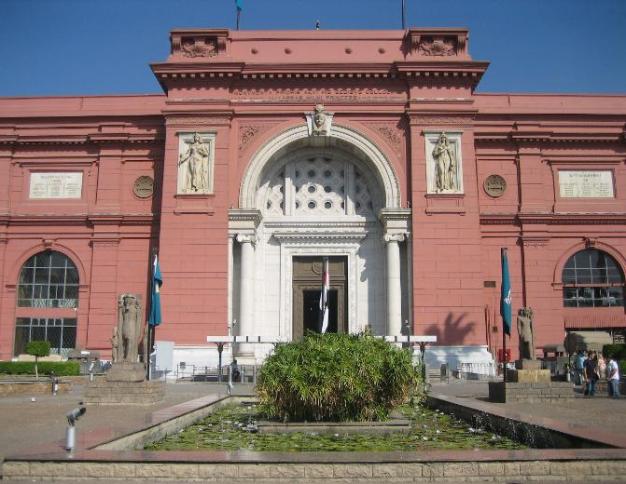
| We spend an hour strolling through the maze of alleyways in the Khan-El-Kalili Bazaar, a Cairo institution since the 1100s |
| We have hot Egyptian mint tea at El Fishawy, located in the same place for hundreds of years and said to be the oldest continuously operated restaurant in Egypt |
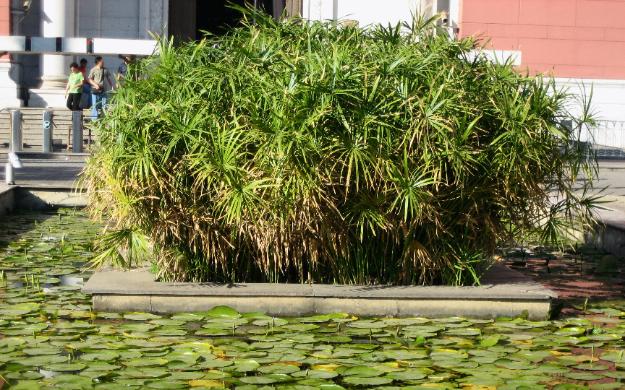
| This pool at the museum entrance contains papyrus and lotus flowers, the symbols of Lower and Upper Egypt |
